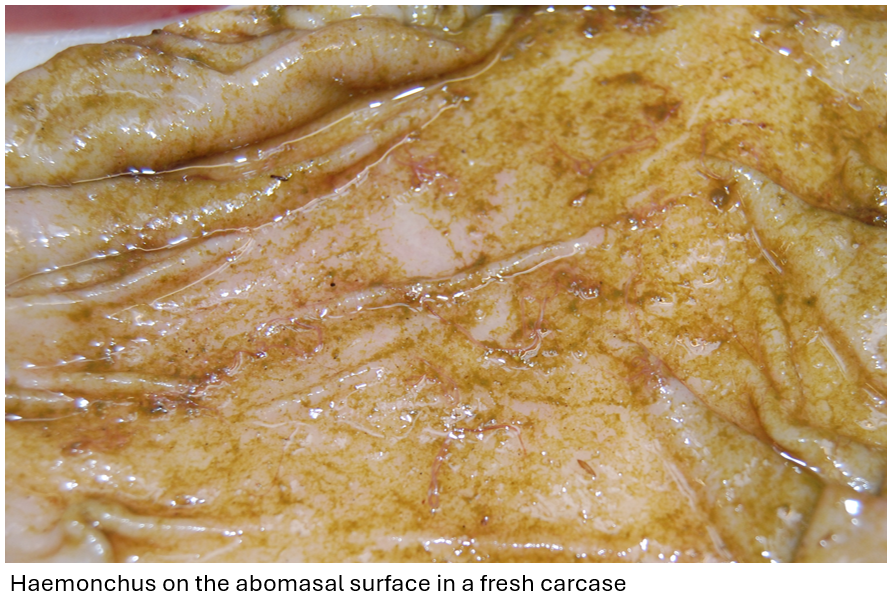Haemonchus diagnosed in multiple submissions this week
We have had several submissions of lambs this week. In four of the five submissions (from different practices), there have been significant numbers of Haemonchus worms visible in the abomasal washes, associated with worm egg counts of 13,650-64,800 strongyle eggs. In two of the submissions, farmers had wormed the lambs at weaning two weeks ago, suggesting either ineffective dosing or wormer resistance.
Heamonchosis presents differently to other gastrointestinal parasite burdens since the L4 and adult worms take blood meals, so deaths are associated with anaemia and hypoproteinaemia. Scour is not a feature of Haemonchosis, unless the infection is mixed with other gastrointestinal worm species. Animals found dead will usually have pale mucous membranes and are often thin. More chronic clinical cases may be weak, lethargic, have pale mucous membranes and subcutaneous oedema (e.g. “bottle-jaw”), and may be mistaken for chronic fluke infections.
Postmortem diagnosis can be tricky, especially if the carcase is autolysed. Pallor of the carcase and oedema, including interlobular oedema of the cranioventral lung lobes (due to hypoproteinaemia), can be seen. In fresh carcases, Heamonchus contortus can be seen on the abomasal surface reasonably easily (once you have your eye in), however in more autolysed carcases the worms lose their bright red colouring and are much harder to see. Remember you can take faeces (or large intestinal content) samples at post mortem for worm egg count, which can also be sent to APHA for PNA testing to identify Haemonchus eggs if needed. The SRUC sampling guide has instructions for an abomasal worm wash (page 67), which can be done using a domestic seive in cases of susepct haemonchosis (but not other abomasal parasites).



Haemonchus contortus are particularly prolific egg layers, and mature females can lay up to 10,000 eggs per day for several months! Infective larvae can develop rapidly on pasture in warm humid conditions, and in Scotland development from egg to third stage larvae can take as little as 2 weeks. Given the weather pattern this year, many pastures will be high risk for having high larval challenge of all gastrointestinal parasites, therefore the SCOPS pasture risk assessment can be a useful tool. Ideally growth rates and/or worm egg counts should be monitored to influence treatment decisions. If worm egg counts are high, this would be a good time to carry out a drench check or faecal egg count reduction test to assess product efficacy (funding is currently available through ScotGov’s Preparing for Sustainable Farming initiative).
We would really like to know if you are diagnosing Haemonchus on farms in your area. We are always pleased to talk over any other cases you see in practice, so don’t hesitate to get in touch.
Posted by SRUC Veterinary Services on 16/08/2024
